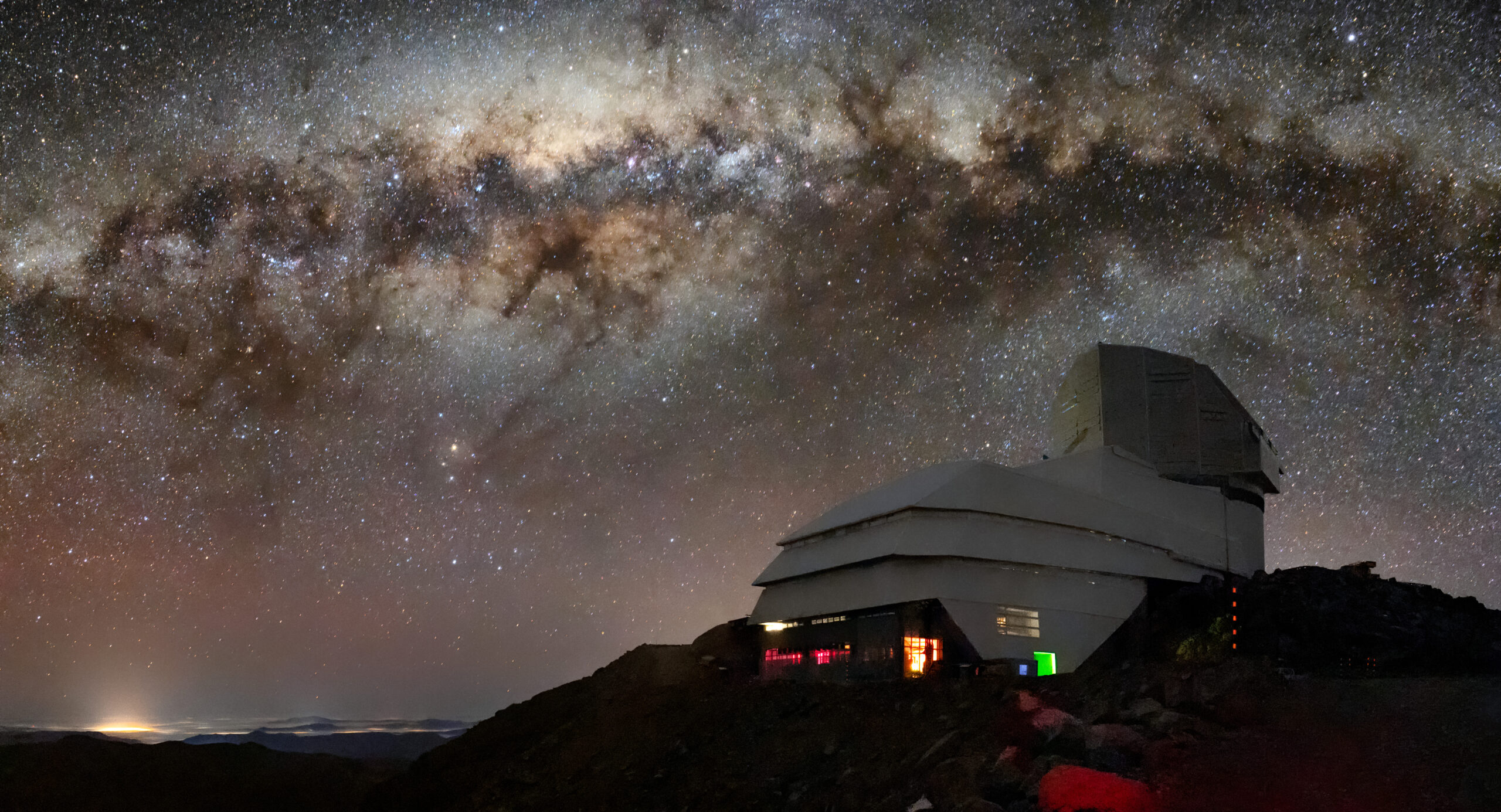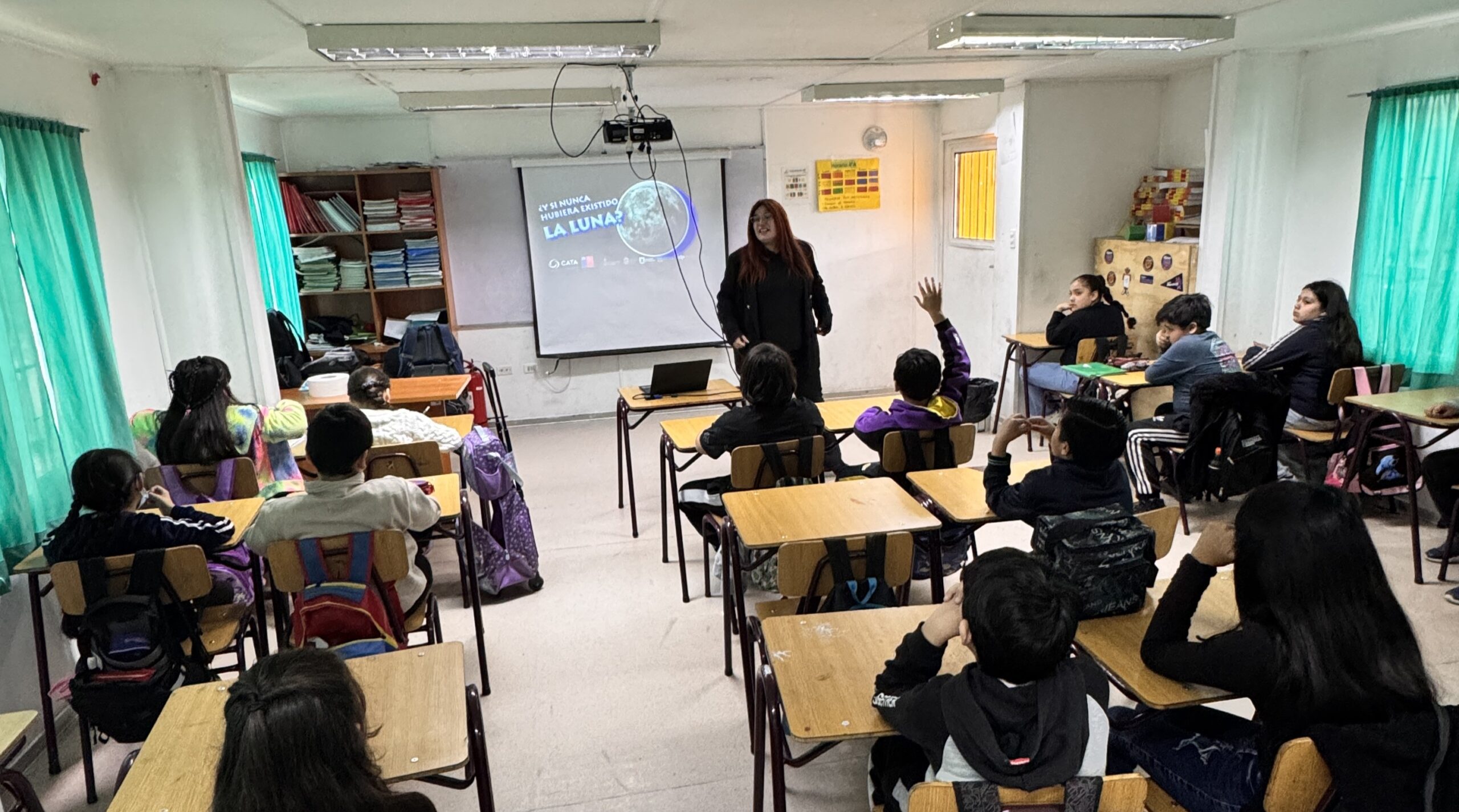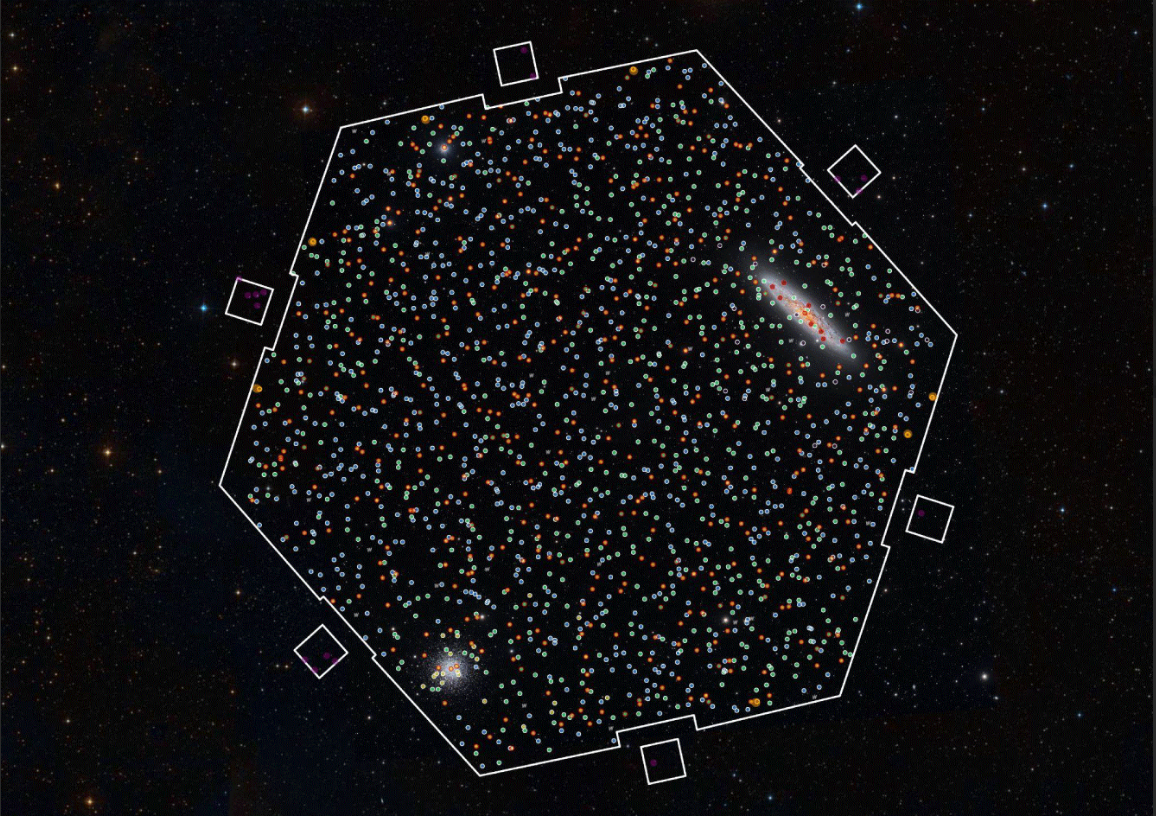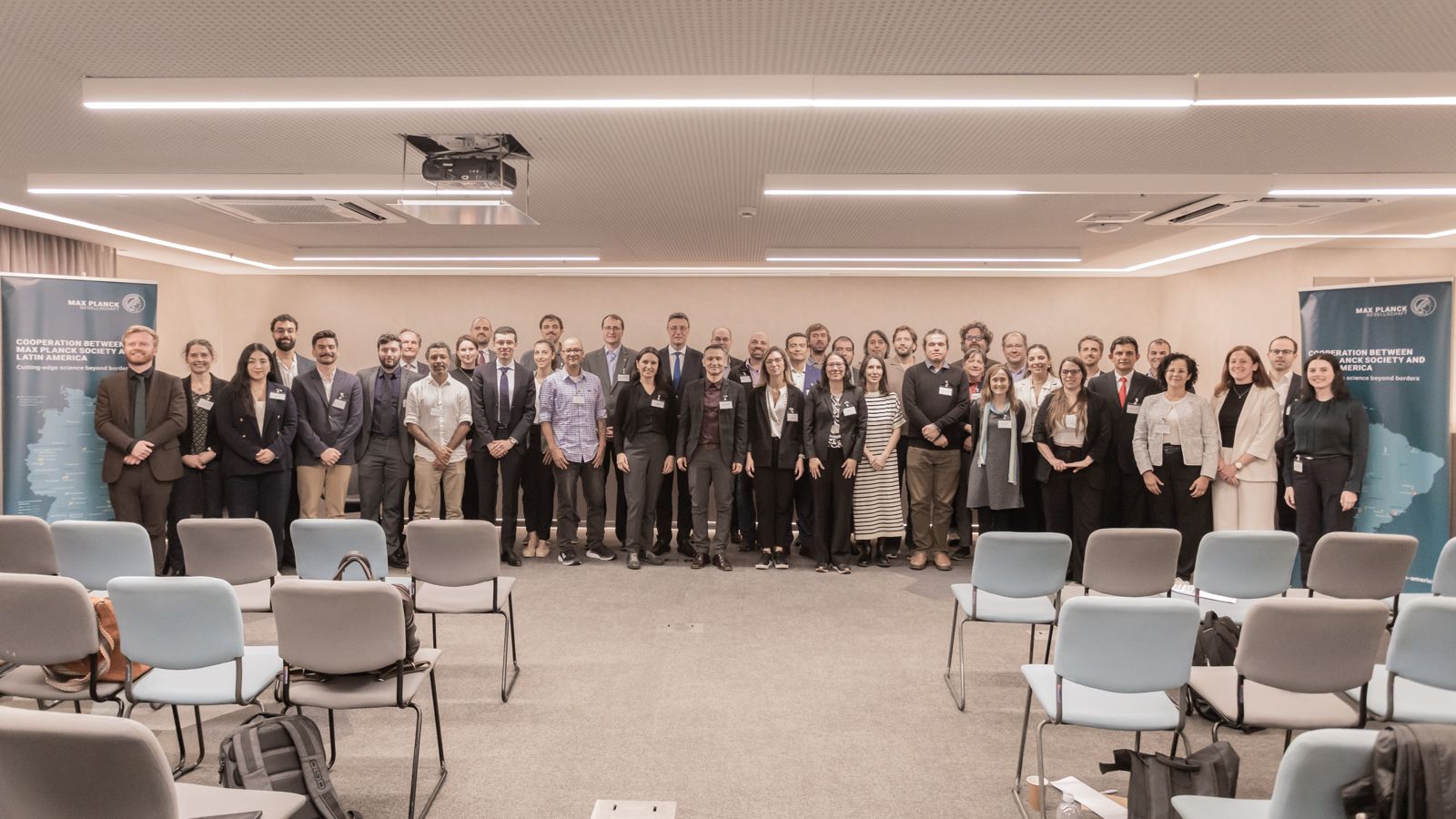
Vera C. Rubin: the telescope that watches the sky and anticipates the future of astronomy
This Monday, June 23, the Vera C. Rubin Observatory shared its first images. Rubin Observatory shared its first images. With its LSST digital camera, the observatory located at Cerro Pachón promises new possibilities and capabilities in the field of astronomical research.
A new chapter in the history of astronomical observation began with the commissioning of the Vera C. Rubin Observatory, a revolutionary project that will forever change the way we look at the sky. Rubin Observatory, a revolutionary project that will forever change the way we look at the sky. Located at Cerro Pachón, in the Coquimbo region, and funded by the U.S. National Science Foundation (NSF) and the Department of Energy (DOE), Vera Rubin is designed to capture astronomical phenomena in real time, allowing an unprecedented understanding of the changing Universe.
Over the next ten years, Rubin will systematically scan the southern hemisphere sky with the largest digital camera: LSST (Legacy Survey of Space and Time). Each point in the sky will be photographed nearly 800 times, generating a “movie of the Universe” that will reveal how the cosmos evolves night by night. This unique capability makes it the first telescope of its kind: a constant watcher that detects even the briefest and subtlest changes.
Unlike other observatories that require redirecting their telescopes after receiving an external alert, Rubin incorporates an automated system that continuously compares newly captured images to a baseline. When a change is detected, whether it is the flickering of a star, the explosion of a supernova, or the appearance of a comet, the system issues a public alert that, within minutes, will be available to astronomers around the world.
With this tool, scientists will be able to study phenomena that until now escaped observation because of their ephemerality. It is estimated that Rubin will generate about ten million alerts per night, warning of objects in motion, celestial bodies that vary their brightness or explosive events that could last only moments. This will make it possible to answer fundamental questions such as: what kind of stars produce bright explosions, how do black holes behave when they are actively feeding and what new phenomena might we discover with such a constant and deep look at the Universe?
Rubin will not only allow us to observe what we already know in more detail, but also to detect the unexpected. Its mission includes the discovery of new types of transient objects, astrophysical phenomena never seen before, and perhaps even contradictions with current models of dark energy and dark matter. Each night, by scanning a vast portion of the sky, this telescope not only documents the present, but also raises questions for the future.
Thanks to its innovative design, which includes the 8.4-meter Simonyi Research Telescope and a state-of-the-art computer infrastructure, Rubin is able to cover the entire visible sky in just a few nights. This will ensure that nothing is missed, even if it occurs on extremely short time scales.
The first images of the observatory
As part of this astronomical milestone, the Center for Astrophysics and Related Technologies (CATA) conducted a live broadcast with BioBioChile to comment on the release of the first images from the Rubin Observatory.
The activity took place on the same day that the first images were made public, also known as “first light” of the Rubin, last Monday, June 23, when the relevance of this moment for science was explained to the general public. Among the participants were distinguished astronomers from CATA, including Dr. Ezequiel Treister, Principal Investigator and academic from the Universidad de Tarapacá, Dr. Gaspar Galaz, Associate Researcher and academic from the Pontificia Universidad Católica de Chile, José Utreras, PhD in Astronomy and Outreach Coordinator of the Center, and Tracy Catalán, Outreach Analyst and Master in Astronomy, who were moderators in the conversation.
During the broadcast, the experts discussed Rubin’s unique capabilities and the significance of its first observations, also highlighting Chile’s role as a world pole in astronomy. The country is not only home to some of the most advanced telescopes on the planet, but is now also the base for the instrument that promises to revolutionize the study of the Universe in the time domain.
“What the Vera Rubin Observatory will do is to take many photographs in a row in different filters for 10 years, that every three nights we will be able to see the differences in position and luminosity of the southern hemisphere sky, something that until now had not yet been done. This will show changes in the objects in the sky: galaxies, stars, discoveries of supernovae and asteroids, among others. This will allow us to compare between different times when these photographs were taken,” said Dr. Gaspar Galaz.
“We hope to study, over ten years, about 100 million active galaxies, i.e. galaxies with a growing supermassive black hole at their center. This ambitious study will allow us to understand how these black holes grow and, above all, how they relate to the evolution of the galaxies that contain them. At the same time, it will offer a unique opportunity to investigate fundamental aspects of cosmology, including properties of the Universe such as the amount and composition of dark matter and dark energy. These are some of the key objectives of the Vera Rubin Observatory,” explained Dr. Ezequiel Treister.
To watch the broadcast made by CATA and BioBioChile, please visit the following link: https://www.youtube.com/watch?v=H3QntbVCjzM.
Recent news
-
 Publicado el: 15/11/2025Leonids meteor shower 2025: What are they, when will they be visible from Chile, and what can we learn from them?
Publicado el: 15/11/2025Leonids meteor shower 2025: What are they, when will they be visible from Chile, and what can we learn from them? -
 Publicado el: 13/11/2025CATA researcher strengthens international ties during visit to the Center for Astrobiology in Madrid
Publicado el: 13/11/2025CATA researcher strengthens international ties during visit to the Center for Astrobiology in Madrid -
 Publicado el: 12/11/2025Fourth graders learned what would happen if the Moon did not exist
Publicado el: 12/11/2025Fourth graders learned what would happen if the Moon did not exist -
 Publicado el: 29/10/2025Chile celebrates the first light of 4MOST: two major projects involving CATA astronomers begin to explore the Universe
Publicado el: 29/10/2025Chile celebrates the first light of 4MOST: two major projects involving CATA astronomers begin to explore the Universe -
 Publicado el: 24/10/2025CATA researcher participated in Max Planck regional meeting in Brazil
Publicado el: 24/10/2025CATA researcher participated in Max Planck regional meeting in Brazil
Categories list
- Acknowledgments 21
- Astrobiology 6
- AstroCluster 1
- Black holes 18
- Corporativo 57
- Cosmology 5
- Descubrimientos 22
- Disclosure 71
- Exoplanets 13
- Extension 4
- Galaxies 21
- Galaxies formation 5
- Inter y Transdisciplina 4
- Local Universe 16
- Publications 6
- Sin categorizar 34
- Solar System 21
- Stellar formation 8
- Technology 14
- Technology Transfer 16

